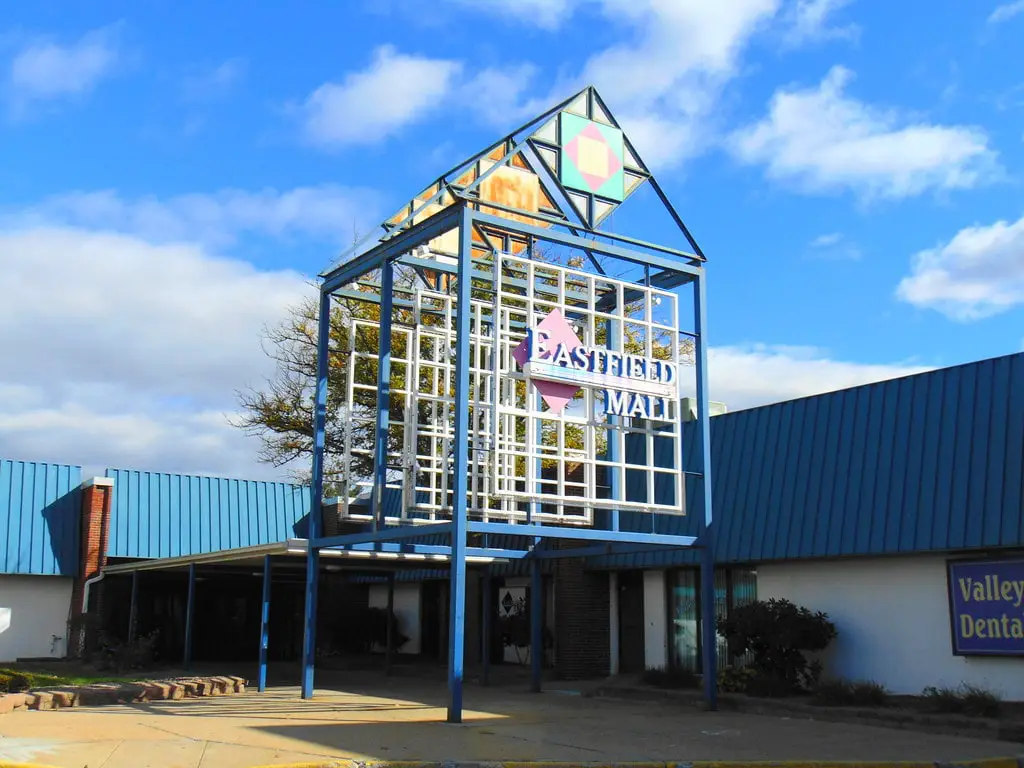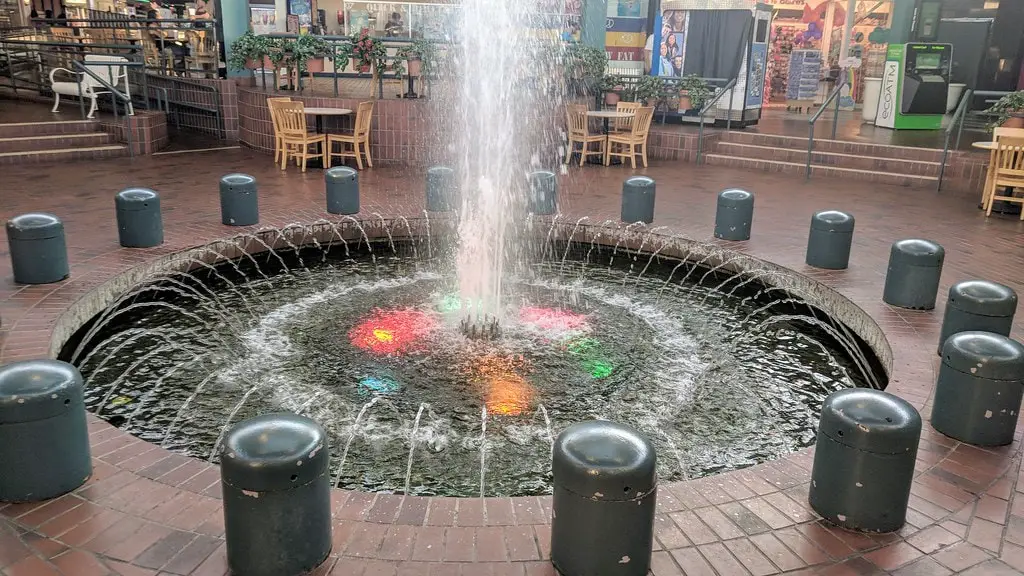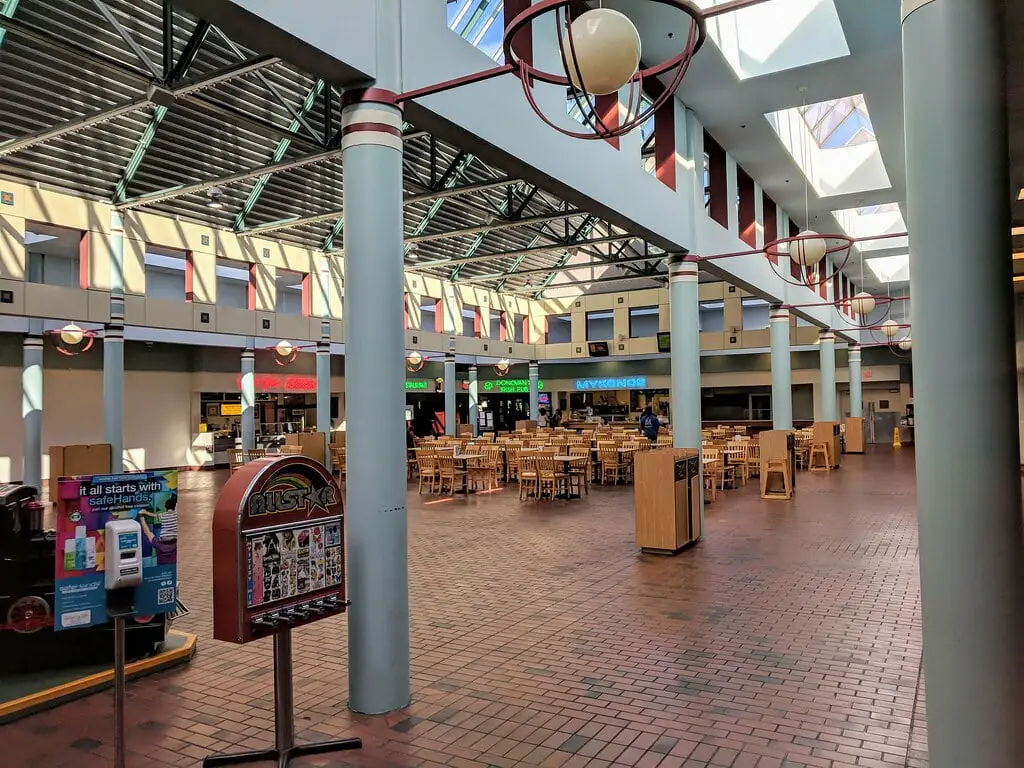The Birth and Early Years of Eastfield Mall
Introduction to Eastfield Mall
In Springfield, Massachusetts, the Eastfield Mall emerged as a significant commercial hub, opening its doors in 1968.
Developed by The Rouse Company, a renowned name in American real estate, the mall marked a new era in the city’s retail landscape.
Spanning a substantial area, Eastfield Mall quickly became a go-to destination for shopping and leisure, reflecting the growing trend of enclosed malls in the United States.
Initial Anchors and Changes
The mall’s inaugural year saw the establishment of key anchor stores, which played a pivotal role in attracting a diverse range of shoppers.
Among these were local department stores Forbes & Wallace and Steiger’s, alongside the nationally recognized Sears.
These anchors not only offered a variety of merchandise but also became landmarks within the community.
However, the retail scene began to evolve rapidly. Forbes & Wallace closed its doors in 1975, leaving a noticeable gap in the mall’s offerings.
This space was occupied later by JCPenney, another retail giant, took over the premises, signaling a shift in the mall’s tenant composition.
The Mall’s First Decades
The initial decades of Eastfield Mall were characterized by growth and adaptation. The mall served as a shopping center and became a social gathering spot, hosting various events and promotions.
During these years, the mall solidified its position in Springfield’s commercial sector. The presence of major retailers and different smaller shops made it a comprehensive shopping destination.
As the mall navigated through the changing tides of retail trends, it managed to retain its relevance and appeal among the residents of Springfield.
This period laid the foundation for the mall’s long-standing presence in the community, making it one of the things to do in Springfield, Massachusetts.
Major Developments and Tenant Changes
Shifts in Retail Landscape
The landscape of Eastfield Mall underwent significant transformations in the late 20th and early 21st centuries.
The closure of Forbes & Wallace in 1975 marked the beginning of these changes. JCPenney soon filled this space, reflecting the dynamic nature of retail trends.
In 1994, another major shift occurred when Filene’s, a subsidiary of May Department Stores, replaced Steiger’s, bringing a fresh retail experience to the mall.
This transition was further solidified in 2006 when Filene’s became Macy’s, following the acquisition of May by Federated Department Stores, Macy’s parent company.

Cinematic Addition
In 2000, Eastfield Mall expanded its entertainment offerings with the addition of a 16-screen movie theater.
Initially operated by Showcase Cinemas, the theater became a popular destination for moviegoers in Springfield.
Later, this theater came under the ownership of Cinemark, a leading name in the movie exhibition industry.
This addition diversified the mall’s attractions and enhanced its status as a comprehensive entertainment hub.
Policy Changes and New Tenants
The early 2000s saw Eastfield Mall adapting to societal changes and challenges. In 2004, Eastfield Mall introduced a policy mandating that customers younger than 15 must be accompanied by an adult if visiting after 5 pm.
This policy aimed to ensure a comfortable and safe shopping environment for all visitors. The mall’s tenant mix continued to evolve with the arrival of Steve & Barry’s, a clothing store, in 2006.
This store marked the mall’s first full occupancy since 1978, although it displaced nine smaller retail outlets.
However, the economic downturn and subsequent bankruptcy of Steve & Barry’s in 2008 led to its closure.
Decline of Traditional Retail
Anchor Store Closures
The decline of traditional retail significantly impacted Eastfield Mall in the 2010s. JCPenney, a long-standing anchor, closed its doors in 2011 due to the company’s restructuring and elimination of its outlet division.
This was followed by the closure of Macy’s in April 2016, a decision that was part of a nationwide plan to shut down 36 stores.
The final blow came with the announcement from Sears in May 2018, declaring the closure of its Eastfield Mall location by September 2018 as part of a plan to close 78 stores nationally.
These closures left the mall without its original anchor tenants, signaling a profound shift in the retail industry.

Impact of Online Shopping
The rise of online shopping further exacerbated the challenges faced by Eastfield Mall. E-commerce giants like Amazon began to dominate the retail landscape, offering convenience and a wide range of products.
This shift in consumer behavior significantly reduced foot traffic in traditional malls, leading to declining sales and profitability for brick-and-mortar stores.
Cinemark’s Closure
The changing entertainment preferences of consumers also played a role in the mall’s decline. In June 2020, Cinemark, the mall’s movie theater operator, closed its doors permanently.
This closure not only reflected the challenges faced by the movie theater industry but also marked the end of an era for Eastfield Mall as a destination for both shopping and entertainment.
The Final Years and Closure
Announcement of Closure
In a significant announcement on April 5, 2023, the fate of Eastfield Mall was sealed. After nearly 56 years of operation, it was declared that the mall would permanently close its doors in the summer of 2023.
This decision marked the end of an era for the once-thriving shopping center. The closure reflected the changing retail environment and the challenges faced by traditional malls nationwide.
Community Reactions and Impact
The news of the mall’s closure elicited various emotions from the Springfield community. For many, Eastfield Mall had been a staple of their shopping experiences and a symbol of local commerce.
The closure not only affected shoppers but also had a significant impact on the local economy and the livelihoods of those employed at the mall.
It sparked discussions about the future of retail and the use of such large commercial spaces in a rapidly evolving market.
The Mall’s Last Day
July 15, 2023, marked the final day of operation for Eastfield Mall. The closing day was a poignant moment for the community, with many visiting the mall for one last time.
The once-bustling corridors, filled with shoppers and the buzz of commerce, stood quiet, signaling the end of an important chapter in Springfield’s retail history.

Post-Closure Developments and Future Plans
Businesses on the Move
The mall’s closure led to a scramble among the businesses housed within. Many of these businesses, some of which had been part of the mall for decades, had to find new locations.
For example, Mykonos, a Greek restaurant that had been a mall fixture for 40 years, relocated to Main Street in downtown Springfield. Similarly, Donovan’s Irish Pub moved to Holyoke.
The movement of these businesses was supported by various community partners and economic development organizations, ensuring a smooth transition.
This relocation phase was crucial for business owners and loyal customers, who were keen to continue supporting their favorite local spots.
Demolition and Redevelopment Plans
Following the closure of Eastfield Mall plans for redevelopment were swiftly put into motion. The Springfield City Council approved a special permit to redevelop the Eastfield Mall site.
This redevelopment is envisioned as a mixed-use commercial and retail hub, poised to bring a new wave of economic activity and community engagement to the area.
The site of the former mall is set to be transformed into a new shopping center named Springfield Crossing.
This new development, expected to open in the summer of 2025, aims to revitalize the area with a fresh retail and commercial experience.
The demolition of the old mall structure began with the dismantling of some of the back sections of the building, paving the way for the new development.
New Prospects
Springfield Crossing is anticipated to bring a new wave of retail and dining options to the area.
Prominent businesses, including Hobby Lobby, Old Navy, Pet Smart, Five Below, Burlington, Ultra, Chic-Fil-A, have already committed to establishing their presence in the new center.
The development is also expected to host a mix of small shops and restaurants, though the full list of tenants remains under wraps.
This new development phase is crucial in reinvigorating the local economy and providing the community with unique shopping and dining experiences.
Community Expectations and Economic Impact
The transformation from Eastfield Mall to Springfield Crossing is laden with expectations from the Springfield community.
Residents hope the new development will bring big-name retailers and support local businesses.
The economic impact of Springfield Crossing is projected to be significant, with the new companies expected to contribute substantially to the city’s tax revenues.
The development is seen as an opportunity to redefine the commercial landscape of Springfield and bring renewed energy to the area.
Reflections on Eastfield Mall’s Legacy
Memories and Nostalgia
Throughout its operational years, Eastfield Mall became more than just a shopping destination; it was a repository of memories for many in Springfield.
From the excited crowds during the holiday seasons to the everyday shoppers, the mall was a backdrop for countless personal stories and experiences.
Former employees and regular visitors fondly recall the vibrant atmosphere that once filled the mall, especially during its peak years.
These memories testify to the mall’s significant role in the community’s social fabric.

The Mall’s Role in Springfield’s History
The Eastfield Mall was pivotal in shaping Springfield’s commercial and social landscape.
Since its opening in 1968, it has contributed to the local economy and reflected the evolving retail and consumer behavior trends.
The mall’s journey mirrored the city’s growth and changes, making it an integral part of Springfield’s history.
Its presence for over half a century marked it as a landmark in the city’s development narrative.
Lessons Learned
The story of Eastfield Mall offers valuable insights into the retail industry’s evolution. It highlights the impact of shifting consumer preferences, the rise of online shopping, and the challenges traditional brick-and-mortar stores face.
The mall’s closure serves as a reminder of the need for adaptability and innovation in changing market dynamics.
It underscores the importance of understanding and responding to consumer needs in a rapidly evolving retail landscape.
Looking Forward to Springfield Crossing
As Springfield turns the page with the development of Springfield Crossing, there is a sense of anticipation and hope.
This new development represents not just a physical transformation of the mall’s site but also a reimagining of the retail experience in the city.
Springfield Crossing is poised to symbolize resilience and renewal, offering new opportunities for commerce, community engagement, and economic growth.
In conclusion, the legacy of Eastfield Mall is a complex tapestry of commerce, community, and change.
Its story reflects the broader narrative of retail evolution, offering lessons and insights for the future.
As Springfield embarks on this new chapter with Springfield Crossing, the memories and lessons of Eastfield Mall will continue to resonate.
